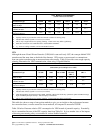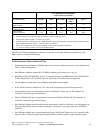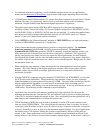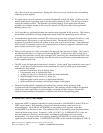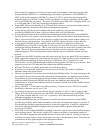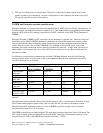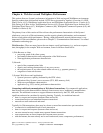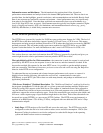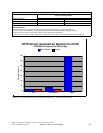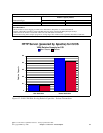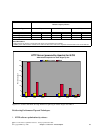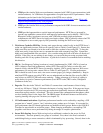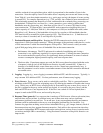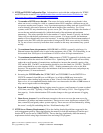
Information source and disclaimer: The information in the sections that follow is based on
performance measurements and analysis done in the internal IBM performance lab. The raw data is not
provided here, but the highlights, general conclusions, and recommendations are included. Results listed
here do not represent any particular customer environment. Actual performance may vary significantly
from what is provided here. Note that these workloads are measured in best-case environments (e.g.,
local LAN, large MTU sizes, no errors). Real Internet networks typically have higher contention, higher
levels of logging and security, MTU size limitations, and intermediate network servers (e.g., proxy,
SOCKS); and therefore, it would likely consume more resources.
6.1 HTTP Server (powered by Apache)
The HTTP Server (powered by Apache) for i5/OS has some exciting new features for V5R4. The level of
the HTTP Server has been increased to support Apache 2.0.52 and is now a UTF-8 server. This means
that requests are being received and then processed as UTF-8 rather than first being converted to EBCDIC
and then processed. This will make porting open source modules for the HTTP Server on your IBM
System i easier than before. For more information on what’s new for HTTP Server for i5/OS, visit
http://www.ibm.com/servers/eserver/iseries/software/http/news/sitenews.html
This section discusses some basic information about HTTP Server (powered by Apache) and gives you
some insight about the relative performance between primitive HTTP Server tests.
The typical high-level flow for Web transactions: the connection is made, the request is received and
processed by the HTTP server, the response is sent to the browser, and the connection is ended. If the
browser has multiple file requests for the same HTTP server, it is possible to get the multiple requests
with one connection. This feature is known as persistent connection and can be set using the KeepAlive
directive in the HTTP server configuration.
To understand the test environment and to better interpret performance tools reports or screens it is
helpful to know that the following jobs and tasks are involved: communications router tasks
(IPRTRnnn), several HTTP jobs with at least one with many threads, and perhaps an additional set of
application jobs/threads.
“Web Server Primitives” Workload Description: The “Web Server Primitives” workload is driven by
the program ApacheBench 2.0.40-dev that runs on a client system and simulates multiple Web browser
clients by issuing URL requests to the Web Server. The number of simulated clients can be adjusted to
vary the offered load, which was kept at a moderate level. Files and programs exist on the IBM System i
platform to support the various transaction types. Each of the transaction types used are quite simple, and
will serve a static response page of specified data length back to the client. Each of the transactions can
be served in a secure (HTTPS:) or a non-secure (HTTP:) fashion. The HTTP server environment is a
partition of an IBM System i 570+ 8-Way (2.2Ghz), configured with one dedicated CPU and a 1 Gbps
communication adapter.
y Static Page: HTTP retrieves a file from IFS and serves the static page. The HTTP server can be
configured to cache the file in its local cache to reduce server resource consumption. FRCA (Fast
Response Caching Accelerator) can also be configured to cache the file deeper in the operating
system and further reduce resource consumption.
IBM i 6.1 Performance Capabilities Reference - January/April/October 2008
© Copyright IBM Corp. 2008 Chapter 6 - Web Server and WebSphere 79



